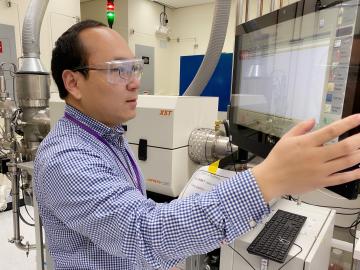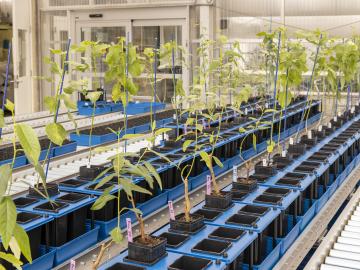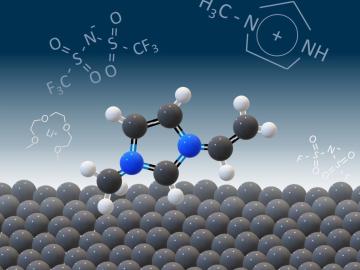
Filter News
Area of Research
- Advanced Manufacturing (8)
- Biological Systems (2)
- Biology and Environment (55)
- Computer Science (2)
- Electricity and Smart Grid (3)
- Energy Science (72)
- Functional Materials for Energy (1)
- Fusion and Fission (6)
- Fusion Energy (3)
- Isotopes (2)
- Materials (72)
- Materials Characterization (1)
- Materials for Computing (15)
- Materials Under Extremes (1)
- National Security (12)
- Neutron Science (21)
- Nuclear Science and Technology (3)
- Quantum information Science (2)
- Sensors and Controls (1)
- Supercomputing (39)
- Transportation Systems (1)
News Type
News Topics
- (-) Bioenergy (90)
- (-) Composites (25)
- (-) Frontier (48)
- (-) Grid (57)
- (-) Materials Science (109)
- (-) Mercury (10)
- (-) Physics (44)
- 3-D Printing/Advanced Manufacturing (106)
- Advanced Reactors (30)
- Artificial Intelligence (100)
- Big Data (66)
- Biology (106)
- Biomedical (57)
- Biotechnology (28)
- Buildings (57)
- Chemical Sciences (59)
- Clean Water (30)
- Computer Science (169)
- Coronavirus (34)
- Critical Materials (18)
- Cybersecurity (23)
- Education (2)
- Emergency (4)
- Energy Storage (79)
- Environment (178)
- Exascale Computing (54)
- Fossil Energy (7)
- Fusion (56)
- High-Performance Computing (104)
- Hydropower (12)
- Irradiation (3)
- Isotopes (46)
- ITER (8)
- Machine Learning (53)
- Materials (118)
- Mathematics (11)
- Microelectronics (3)
- Microscopy (42)
- Molten Salt (8)
- Nanotechnology (41)
- National Security (70)
- Neutron Science (122)
- Nuclear Energy (98)
- Partnerships (43)
- Polymers (23)
- Quantum Computing (41)
- Quantum Science (63)
- Security (20)
- Simulation (55)
- Software (1)
- Space Exploration (24)
- Statistics (3)
- Summit (50)
- Transportation (77)
Media Contacts

About 60 years ago, scientists discovered that a certain rare earth metal-hydrogen mixture, yttrium, could be the ideal moderator to go inside small, gas-cooled nuclear reactors.

Oak Ridge National Laboratory scientists have discovered a cost-effective way to significantly improve the mechanical performance of common polymer nanocomposite materials.

Scientists discovered a strategy for layering dissimilar crystals with atomic precision to control the size of resulting magnetic quasi-particles called skyrmions.

Systems biologist Paul Abraham uses his fascination with proteins, the molecular machines of nature, to explore new ways to engineer more productive ecosystems and hardier bioenergy crops.

Scientists at the Department of Energy’s Oak Ridge National Laboratory have a powerful new tool in the quest to produce better plants for biofuels, bioproducts and agriculture.

An all-in-one experimental platform developed at Oak Ridge National Laboratory’s Center for Nanophase Materials Sciences accelerates research on promising materials for future technologies.

Scientists seeking ways to improve a battery’s ability to hold a charge longer, using advanced materials that are safe, stable and efficient, have determined that the materials themselves are only part of the solution.

ORNL researchers have developed an intelligent power electronic inverter platform that can connect locally sited energy resources such as solar panels, energy storage and electric vehicles and smoothly interact with the utility power grid.

From materials science and earth system modeling to quantum information science and cybersecurity, experts in many fields run simulations and conduct experiments to collect the abundance of data necessary for scientific progress.



